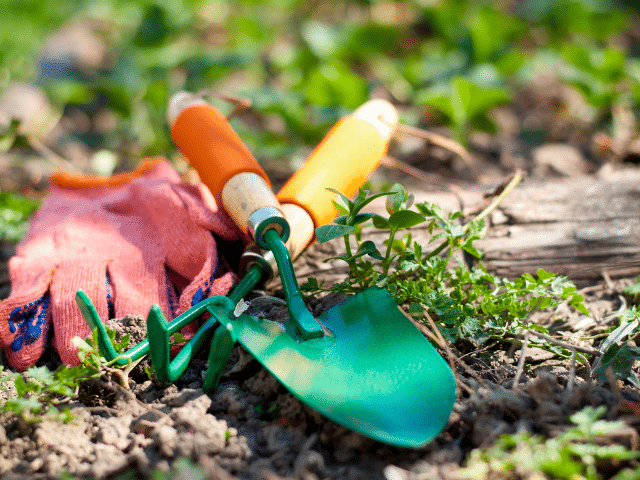We’d like to chat about pruning your flowering spring bulbs, plants & shrubs for a minute. You may notice some of your daffodils, jonquils, hyacinths, tulips, and other spring bulbs have given you a few weeks of beautiful color, but are now starting to look a little rough around the edges. While it may be tempting to prune back the unsightly leaves to the ground to make way for late spring blooms & early summer and your next round of showy color, DON’T do it!
You can trim the individual spent blooms from their stalk, but it’s important to leave the leaves (ha!) alone until they completely turn yellow and die back on their own- especially if you want vibrant blooms to come back next year.
Bulbs will get all of their nutrients for the following season after their flowers have bloomed and they’re just hanging out for a few weeks. Pruning them too early because they don’t look as good will deprive them of that time to take in food they need to produce blooms next spring. We must also caution against tying them back or putting a rubber band around them. The leaves won’t be exposed the sunlight they require.
The general consensus is to give the plants about 6 weeks after they’re completely finished blooming to store up nutrients and allow the leaves to photosynthesize before pruning them. If you forgot to mark your calendar because for some of us, time has lost all meaning during this quarantine, you can simply wait until they turn yellow or brown.
If the sight is too much for you to bear- fear not- we have a solution. Sprinkling in other annuals like a Snapdragon or pansy, if you have a mixed border, or other early blooming perennials, will help to distract from the spent leaves. Hellebores or Lenten Roses, often the first perennial bloomer, will also have a nice bloom before and after the shorter-living bulb blooms. We’ve got a beautiful selection of annuals for your borders you can plant now- check out some of our offerings under the Garden Center tab and in the Annual section.
If you haven’t fed your spring bulbs yet, it’s not too late- you can do so now. Look for a bulb fertilizer with a higher amount of phosphorous, or you can use bonemeal. We carry Espoma Bulb Tone in 4lb bags for $13.99. –
For other spring flowering plants and shrubs- you’ll need to wait to prune until after they’ve finished blooming for this season.
This goes for: Lilac, Viburnum, Forsythia, Sandcherry, Azalea, Rhododendron, Quince, Witchhazel
For your summer blooming plants- Hydrangeas, Crape myrtles, Spireas, Weigela, Rose of Sharon, Boxwoods, Roses, ornamental grasses, don’t prune now if they’ve got new growth on them. After they’ve bloomed this season, you can prune.
For many of these plants, new growth builds upon last season’s growth, so pruning at this time would rob you of growth for this year.
Since pruning is not a natural occurrence, your plants can of course survive and bloom without pruning, but to keep certain plants contained in their garden spots, or from taking over a shared spot, you certainly can prune carefully and mindfully, without causing the plant itself any harm.
If a plant has become completely overgrown, there are some drastic measures you can take- called hard pruning or rejuvenation pruning, which is pruning down to 6-12 inches above the ground.
Dogwood, Spirea, Forsythia, Hydrangea, Honeysuckle, Lilac & Weigela can respond well to hard pruning.
If you have questions about specific plants and their best pruning practices, we’re happy to help on your next trip or call to the farm.


